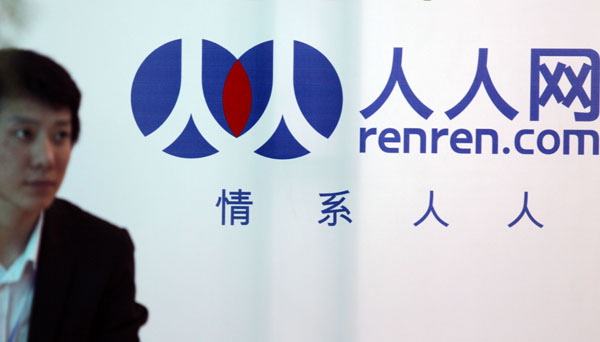Renren, which was launched in 2005, is often called China’s first generation social media platform. Back in the days, it was dubbed China’s Facebook for almost identical functionality and design. Even its color scheme was the exact copy of Facebook. It also uses apps in much the same way as Facebook does.
Unfortunately, Renren didn’t live up to high expectations, quickly losing the top spot to more popular platforms which were launched later, such as Sina Weibo and then, most recently, WeChat.
Despite its similarities with the world largest social media site, Renren failed to take advantage of the Facebook ban in China, letting other, more dynamic networks, to fill the vacuum. Also, unlike Facebook, it has never been profitable. In fact, there has been significant decrease in revenues across all of its services in 2014, compared to 2013.
According to the company filing, total revenues decreased by over 40% on YoY basis, primarily due to drop in income from advertising and social games.
In terms of size, in September 2014, the company reported 219 million activated users and 44 million monthly unique log-in users. This is still a respectable figure, although it represents a decrease from 50 million monthly users a year earlier.
Renren is blaming fierce competition for its disappointing performance and is trying to address one of the underlying reasons – failure to capture mobile audience.
Renren’s efforts to capitalize on online videos by buying 56.com back in 2011 was ultimately a failure and the company has begun divesting from this project last year. Social gaming, another potentially lucrative niche with the young audience, failed to gain enough traction and is not contributing enough revenue.
Also, the company is refocusing their efforts on 2nd and 3rd tier cities where it still remains quite popular among students. The majority of Renren users are between 16 and 30 years old which is attributed to the fact that it grew around universities and colleges, much like Facebook at its very start. By various estimates, it covers about 1/3rd of China’s middle school students, not a particularly exiting sector from marketers’ standpoint.
So, is Renren becoming irrelevant for marketing in China?
It certainly seems that it has lost and continue losing a lot of its value. Although, there were some success stories in the past, such as often mentioned condom promotions, brands are increasingly investing their marketing budget into faster growing and more popular social media networks. There are very few big brand newcomers on Renren, although the old ones are still there.
Renren’s efforts to capitalize on online videos by buying 56.com back in 2011 was ultimately a failure and the company has begun divesting from this project last year. Social gaming, another potentially lucrative niche with the young audience, failed to gain enough traction and is not contributing enough revenue.
Another venture, an online dating app called TongXueShuo (同学说) launched in 2013 is up for a tough competition against WeChat and Momo (see my earlier post about Momo).
In conclusion, things are definitely looking bleak for Renren, it failed to capitalize on first mover advantage early on and has been slow to exploit new market opportunities.
On the other hand, the user base of over 200 million is still too large to ignore. One niche where it could be worth having brand presence on this network would be for companies selling products and services to college students, such as courses, offers from domestic and overseas educational institutions etc. In fact, one of the promising directions that Renren is trying to develop is facilitating students loans through its new college financing section on its site.




